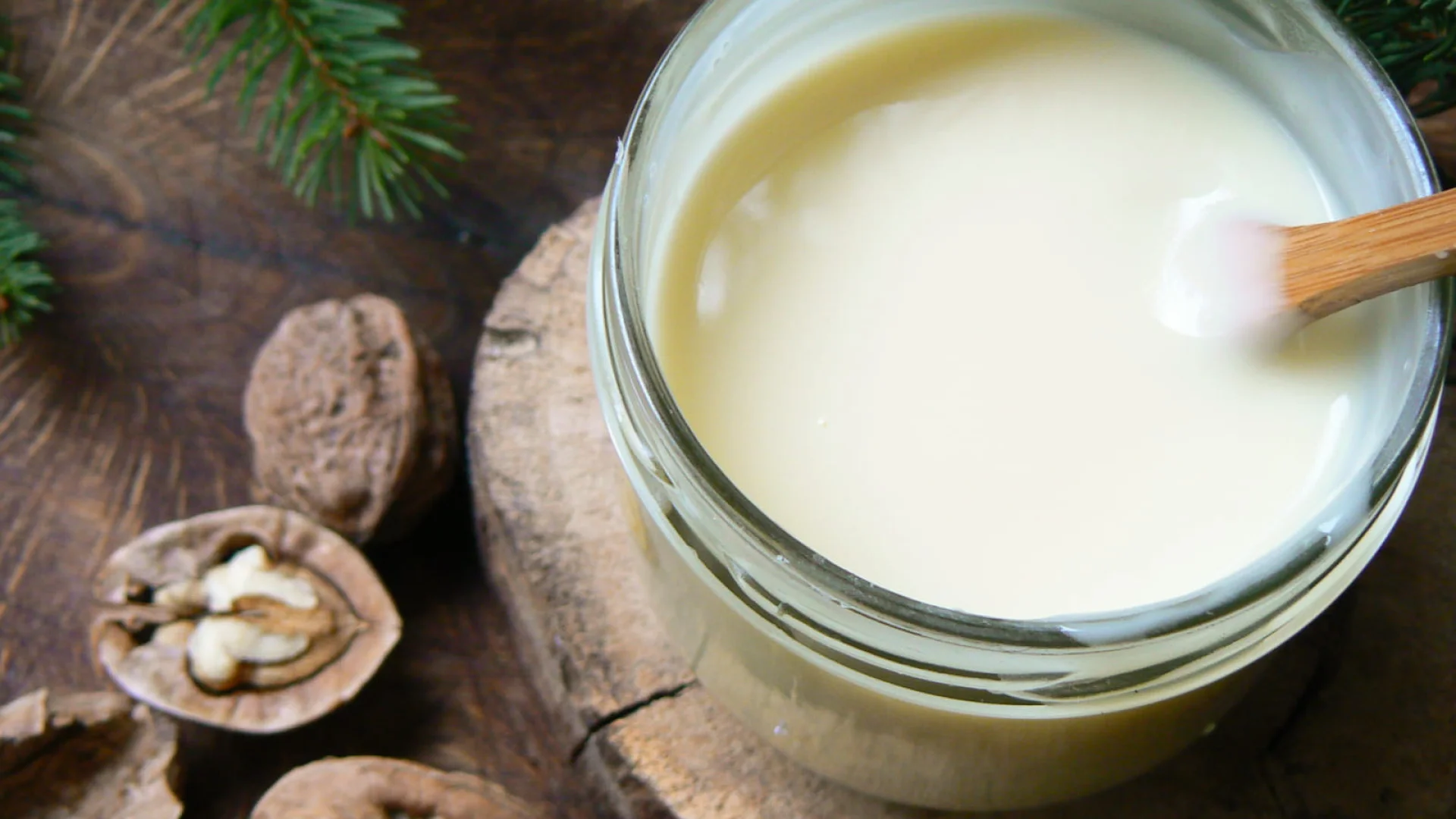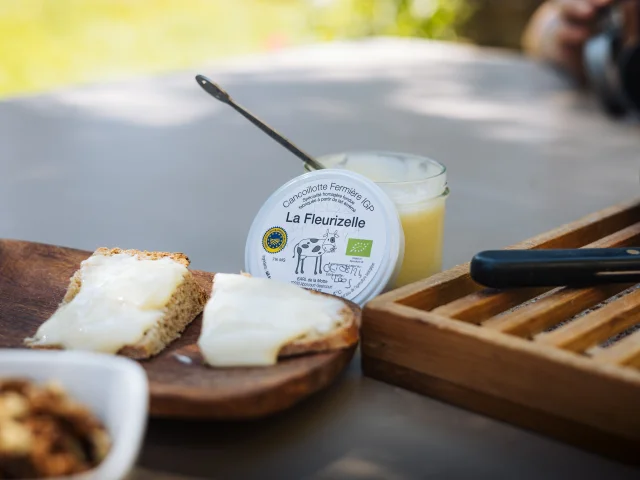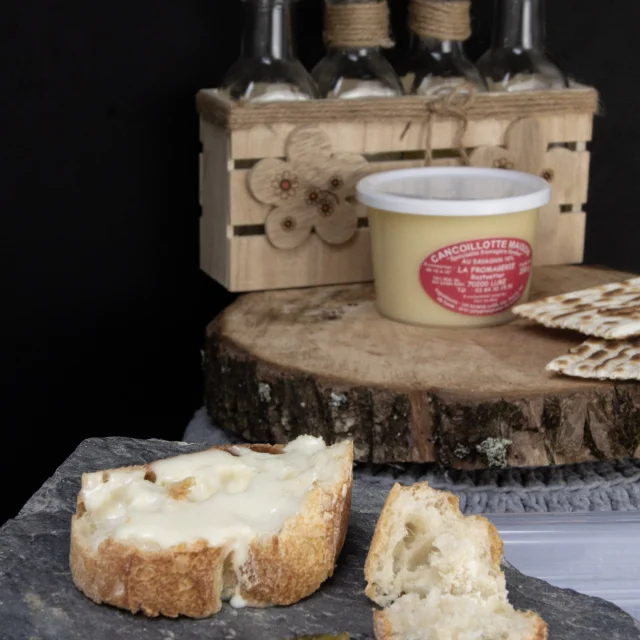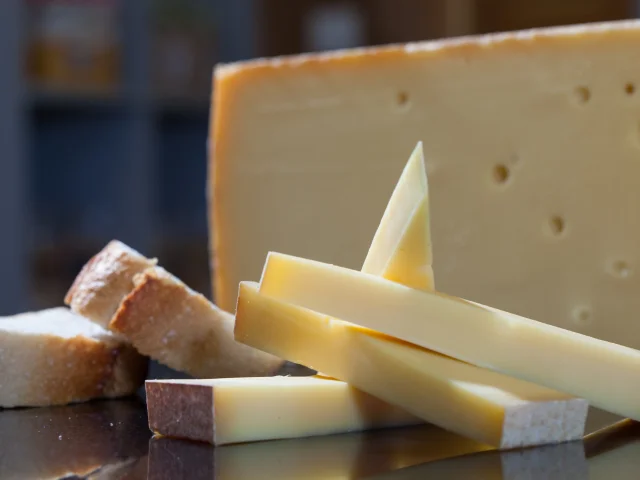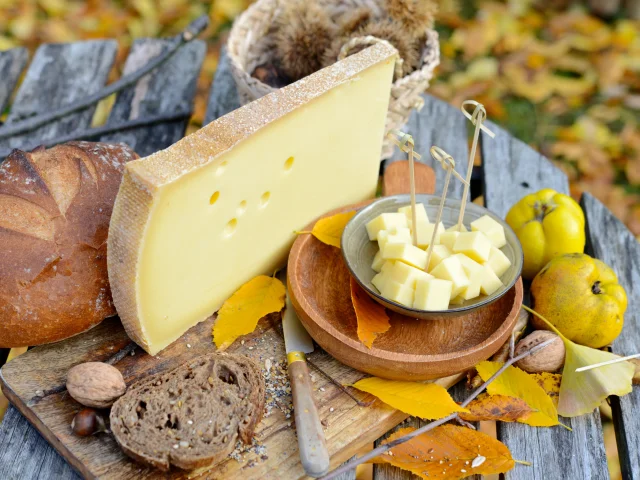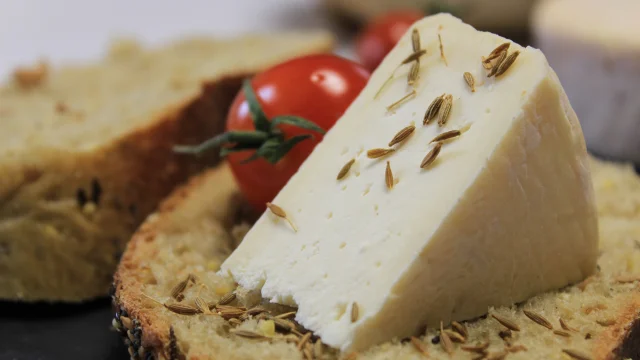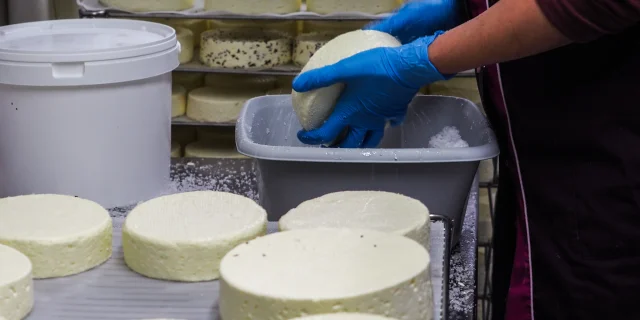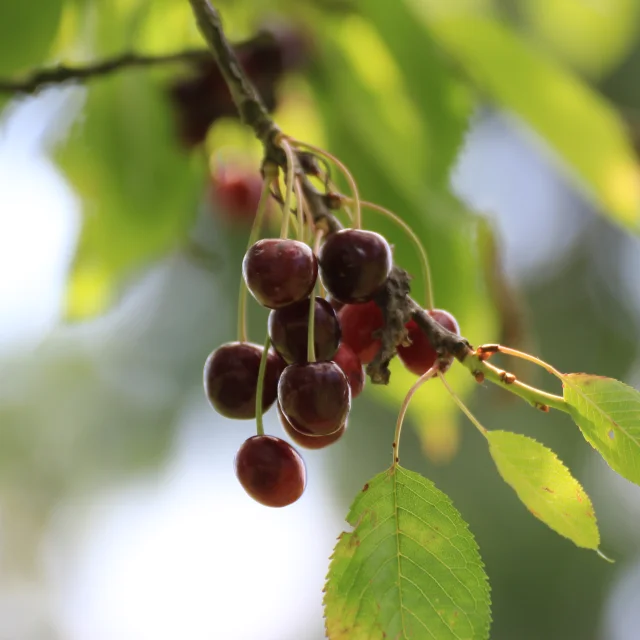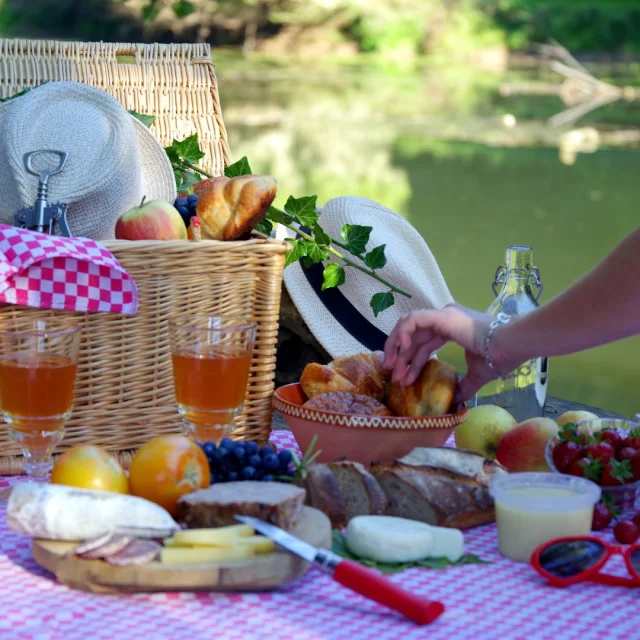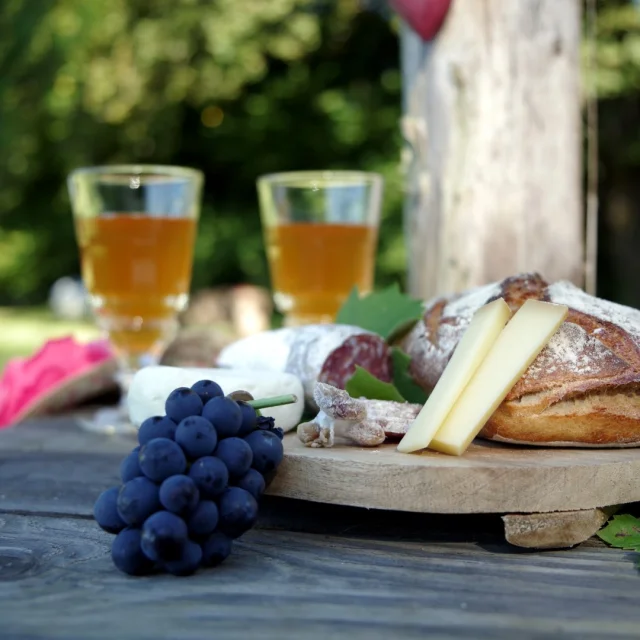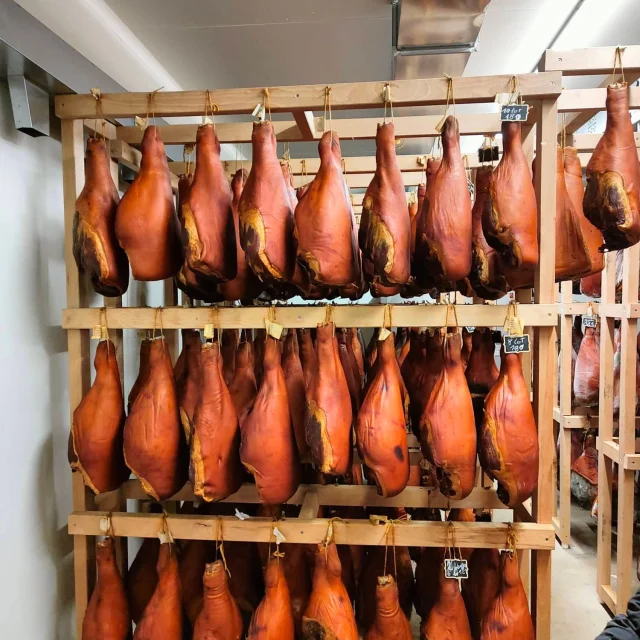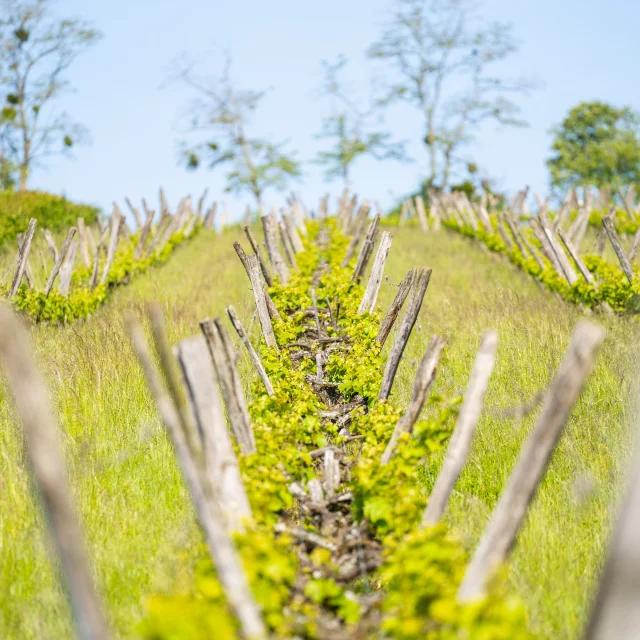Cancoillotte is the Haut-Saône cheese par excellence! With its creamy, stringy texture, it has an authentic character and has been a staple on the tables of the Franche-Comté region for centuries.
This cheese speciality, made from skimmed cow’s milk, is the result of a skilful blend of matured metton, butter and water, giving rise to a creamy texture and incomparable flavour.
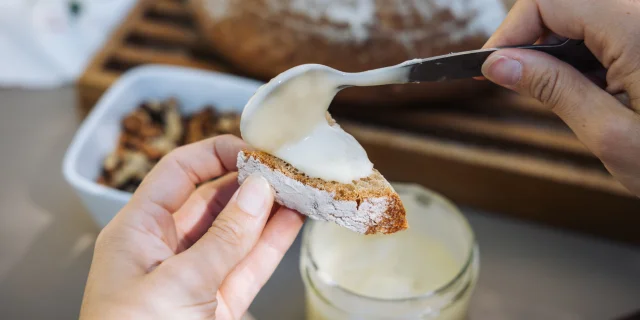 A woman spreading IGP cancoillotte on a piece of bread, made by the La Fleurizelle organic cheese dairy in Aboncourt-Gesincourt - Vesoul-Val de Saône
A woman spreading IGP cancoillotte on a piece of bread, made by the La Fleurizelle organic cheese dairy in Aboncourt-Gesincourt - Vesoul-Val de Saône